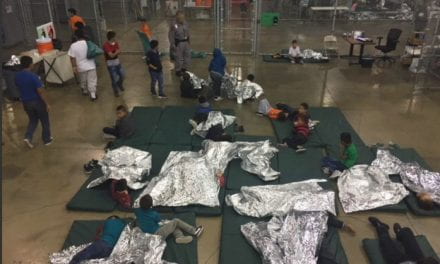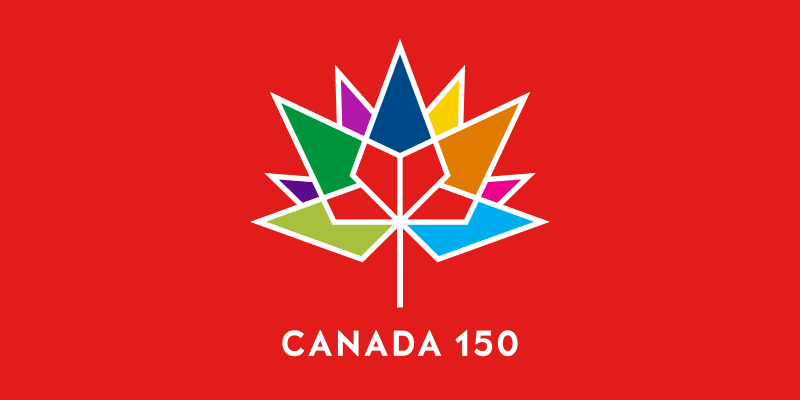The COVID-19 pandemic highlighted the failures in the US refugee resettlement program and simultaneously introduced new challenges to resettlement agencies. The nine resettlement agencies in the United States need more funding, publicity, and community support. As a result of the COVID-19 pandemic, fewer refugees were admitted into the United States. Those who were admitted faced higher levels of xenophobia and discrimination and a higher risk of COVID-19 infection due to increased barriers to adequate healthcare. The first few months after resettlement is an extremely important and fragile time in the life of a refugee, as it determines how likely they are to fully acclimate to American culture. The COVID-19 pandemic halted resettlement agencies from providing adequate services and support to refugee families, decreasing their likelihood of integration into American society. As an influx of refugees arrive in the United States due to the humanitarian crisis in Afghanistan, government officials must learn from the challenges exposed by the pandemic and modify the US refugee resettlement program to ensure refugees can adapt to their new communities and culture.
The US resettlement process is a complicated and expensive period of time in the life of a refugee that is crucial to their employment, housing, and community acclimation. By definition, “…refugees [are] individuals who have been forcibly displaced outside their native countries [and] come from a history of hardship, including war, famine, and violence.”[1] After fleeing their country, refugees are typically relocated to refugee camps before resettlement in another country. In the United States, there are nine major refugee resettlement agencies that are responsible for helping refugees apply for public benefits, find housing and employment, receive cash assistance, and overall acclimate to American life and culture. [2] These agencies rely heavily on government funding from cash assistance programs to provide necessary services for refugee clients.[3] Some of the services provided by resettlement agencies include securing safe housing, applying for public benefits, finding stable employment opportunities, and providing minimal basic necessities such as clothing and household items. The services provided by resettlement agencies are crucial for their refugee clients to adapt to American life and culture – yet the challenges presented by the pandemic halted the work and efficiency of resettlement agencies.
The refugee ceiling is the number of refugees the United States is willing to admit and resettle each year. In 1980, the refugee ceiling was over 230,000 at the end of President Carter’s term.[4] In 1983, under President Reagan, known for strict immigration policies, the refugee ceiling was reduced to 90,000.[5] By 2016, the annual ceiling for US refugee admissions was 85,000.[6] The Trump administration lowered the refugee ceiling progressively each year to the lowest ceiling since the 1980s at 11,814.[7] As the pandemic reached the United States and lockdowns began in March 2020, the UNHCR suspended all refugee resettlement and the Trump administration temporarily halted all refugee admissions and entry of asylum seekers due to public health concerns.[8] The steady decrease in the refugee ceiling since the 1980s reached its culmination during the pandemic in 2020. Although the refugee ceiling increased in 2021 to 62,500, the refugee ceiling is still significantly less than the historical norm and is contradictory to America’s self-proclaimed melting-pot identity.[9]
Refugees fortunate enough to be resettled in the United States face additional challenges. In 2020, refugees living in the US faced a stark increase in xenophobia and discrimination based on racial and ethnic origin as a result of the pandemic and the Trump administration. The Trump administration, “…used fears emerging during the pandemic to create policies and procedures that further restricted immigration and conflated immigrants with public safety or health concerns.”[10] Throughout the pandemic, officials frequently labeled the virus the “Wuhan coronavirus” or the “China virus.” [11] Government officials purposely used racially motivated phrases to reduce the public perception of their responsibility for the pandemic. By placing blame for the onset of the pandemic on Asian individuals, Asian Americans became a scapegoat of the fear and instability the pandemic instilled. The Federal Bureau of Investigation issued a safety warning and noted a sharp increase in the number of hate crimes committed against Asian Americans.[12] For Asian refugees newly arrived in the US, facing racial discrimination decreases the likelihood for their successful acclimation within their new communities.
Refugees often have limited English-speaking skills, lower socioeconomic status, and insufficient support services, which can make experiencing racial discrimination extremely challenging as they may not understand what is occurring or why they were targeted.[13] Refugees may also lack the mental health services needed to cope with and overcome racial discrimination. In a study on discrimination against Asian refugees amidst the pandemic, “one-third of participants reported experiencing at least one type of discrimination, and more than two-thirds experienced at least one type of pandemic-related stress.”[14] Experiencing racial discrimination and extreme stress increases the difficulty of assimilation and community building for refugees. Racial discrimination against refugees as a result of government leadership is a serious threat to the success of resettlement agencies.
In addition to the stress of racial discrimination as a result of the pandemic, refugees also experienced the high-stress avoiding possible exposure to a deadly virus. Recently resettled refugees are at higher risk of infection for COVID-19 due to the numerous risk factors that increase their exposure to the virus. Some examples of risk factors include, “being more likely to experience poverty and live in crowded housing, being employed in less protected, service-sector jobs, experiencing language and health care access barriers, and having higher rates of comorbidities.”[15] Refugees resettled in the United States in 2020 were faced with the regular challenges of finding work, affordable housing, and learning English in order to receive public benefits –in the midst of constant lockdowns and uncertainty. The job opportunities for recently arrived refugees with limited English proficiency are unlikely to offer work-from-home options or expansive benefits. Recently resettled refugees must find a job as soon as possible in order to qualify for government assistance programs. As a result, refugees often work low-wage service jobs in high-risk environments, meaning that they were more likely to be exposed to the virus.
Before resettlement, refugees typically live in refugee camps in which limited resources and extreme mental and physical stress cause various acute and chronic diseases amongst refugee populations that continue beyond resettlement.[16] High rates of diseases such as, “…tuberculosis, malaria, hepatitis, intestinal parasites, and nutritional deficiencies have been documented in resettled refugees.” [17] Refugees often arrive with a complex medical history yet face numerous barriers to adequate healthcare upon arrival. In a report by ProPublica, researchers found that “overwhelmed US hospital systems were unable to use interpreters when speaking with patients and their families.”[18] Refugees infected with COVID-19 with insufficient English skills would be incapable of communicating with their healthcare providers. Furthermore, recently arrived refugees typically cannot afford private medical insurance and therefore rely on government benefits, such as Medicaid and Medicare, to receive healthcare. Individuals with underlying or untreated health issues are more likely to become severely ill after contracting COVID-19. Consequently, refugees unable to communicate their prior health issues due to the barriers to adequate healthcare are at higher risk of severe COVID-19 symptoms.
Despite the countless negative impacts of the pandemic on refugee populations in the United States, there were some positive impacts. In the United States, the healthcare sector has the second-largest workforce of refugees, who make up over 15% of the industry.[19] The pandemic increased demand for labor in the healthcare sector due to the extreme increase in hospitalized individuals. The International Rescue Committee (IRC) led an innovative program in which it identified its foreign-trained refugees and acquired temporary licenses to allow them to work in American hospitals and overcome the barriers preventing the recognition of their foreign credentials.[20] The dire need for more medical workers created an opportunity for refugees to find stable work and survive the unstable nature of the job market throughout the numerous lockdowns.
In addition to the healthcare sector, refugees were recognized as vital members of their community in essential service-sector roles. In the United States, “…more than 46,000 refugees work in food processing, more than 31,000 work in grocery stores and food markets, and over 77,500 work in restaurants and food service establishments.”[21] The circumstances of the pandemic did increase job opportunities for refugees and cemented their role in their new communities. The critical role of refugees in their communities throughout the pandemic exposes an important irony – refugees provided life-saving care and services to Americans despite suffering from strict immigration policies, increased racial discrimination, and barriers to healthcare amidst the pandemic,
The COVID-19 pandemic highlighted the shortfalls of the US refugee resettlement program and made it clear where vast improvements must be made. In terms of policy recommendations, the most important source of support for refugees is resettlement agencies. Resettlement agencies “…are typically the first groups to engage with refugees after arrival, they plan an important role in educating refugees about how to protect themselves.”[22] By increasing funding to refugee resettlement agencies, caseworkers could provide better quality services and ensure a comfortable transition to life in the United States. With increased funding, caseworkers could provide items such as weather-appropriate clothing, personal hygiene tools, linens, and school supplies. Resettlement agencies heavily rely on local donations to provide these items to their clients, meaning that they are not guaranteed. By increasing funding and support, agencies can guarantee these necessary items for their clients and increase the comfort of the resettlement process.
The most significant barrier to adequate healthcare for refugees is the inability to communicate with healthcare providers. Alleviating language barriers through the use of quality interpreters would ensure effective communication between patients and healthcare providers. Interpretation services can be provided through language banks or virtual interpretation services via phone or video conference.[23] With more funding, resettlement agencies could even hire full-time interpreters, reducing their dependence on volunteer or free-lance interpreters who may have unreliable schedules or inadequate interpretation skills. Furthermore, increasing the availability of English language classes for refugees could, “…decrease the communication health access barrier as well as increase the adaptive advantage of employment and acculturation”[24] This support can be provided by resettlement agencies if given adequate funding, training, and resources. With reliable interpretation and more access to English language classes, resettlement agencies can mitigate linguistic and cultural barriers and successfully teach refugees how to access care for their health needs, including mental health.
As the US withdraws from Afghanistan, resettlement agencies are experiencing an influx of refugees from the state, many of whom worked for the US abroad. The US is ill-prepared for providing the resettlement for thousands of at-risk Afghan migrants with nowhere to live or work. In this year alone, “the U.S. evacuated more than 65,000 Afghans of whom 24,000 have already arrived in the U.S., 23,000 are on U.S. military bases abroad, and 20,000 are waiting in other countries.”[25] The 24,000 Afghan refugees who already arrived in the United States is more than double the refugee ceiling of 11,814 under the Trump administration.[26] Resettlement agencies are currently facing the largest number of incoming migrants since the Trump administration amongst the ongoing challenges of the pandemic. It is critical, now more than ever, for the refugee agencies to have adequate support and funding in order to complete the necessary services for the thousands of Afghans evacuated to the United States.
For refugees and resettlement agencies, cultural acclimation is the goal. Despite widespread access to vaccines and a general decrease in COVID-19 cases in the United States, the challenges exposed by the pandemic still persist. The current Biden administration must offer resettlement agencies more support in order to mitigate the acclimation to American culture for the current influx of Afghan refugees, and for all refugees entering the United States in the future. To quote Yasin, an Afghan refugee resettled in Baltimore, “all human beings belong to one origin and the Earth is made of one soil. The place where a person lives and the people around them, the family, the community and the society—that is their home and that is life.”[27] It is the responsibility of the United States to ensure that the refugees resettled here can successfully acclimate to their new country and one day, can be proud to call themselves an American.
Works Cited
[1] Morris, Meghan D,. et al. 2009. “Healthcare Barriers for Refugees Post-resettlement.” Journal of Community Health 34: 529-538. https://doi.org/10.1007/s10900-009-9175-3
[2] Elkin, Sam, et al. 2018. “Understanding the Intersection Between TANF and Refugee Cash Assistance Services, Final Report.” Office of Planning, Research, and Evaluation, Administration for Children and Families, U.S. Department of Health and Human Services. https://www.acf.hhs.gov/opre/report/understanding-intersection-between-tanf-and-refugee-cash-assistance
[3] Elkin, Sam, et al. 2018. “Understanding the Intersection Between TANF and Refugee Cash Assistance Services.”
[4] Migration Policy Institute. 2021. “U.S. Annual Refugee Resettlement Ceilings and Number of Refugees Admitted, 1980-Present.” Migration Policy Institute. State Department Bureau of Population, Refugees, and Migration. August 23, 2021. https://www.migrationpolicy.org/programs/data-hub/charts/us-annual-refugee-resettlement-ceilings-and-number-refugees-admitted-united.
[5] Migration Policy Institute. 2021. “U.S. Annual Refugee Resettlement Ceilings.”
[6] Migration Policy Institute. 2021. “U.S. Annual Refugee Resettlement Ceilings.”
[7] Migration Policy Institute. 2021. “U.S. Annual Refugee Resettlement Ceilings.”
[8] Grant, Aubrey. 2020. “Coronavirus, Refugees, and Government Policy: The State of U.S.
Refugee Resettlement during the Coronavirus Pandemic.” World Medical & Health Policy 12 (3): 291–99. doi:10.1002/wmh3.362.
[9] Migration Policy Institute. 2021. “U.S. Annual Refugee Resettlement Ceilings.”
[10] Grant, Aubrey. 2020. “Coronavirus, Refugees, and Government Policy.”
[11] Zhang, Mengxi, et al. 2021. “Discrimination and Stress Among Asian Refugee Populations During the COVID-19 Pandemic: Evidence from Bhutanese and Burmese Refugees in the USA.” Journal of Racial and Ethnic Health Disparities, 1. doi:10.1007/s40615-021-00992-y.
[12] Zhang, Mengxi, et al. 2021. “Discrimination and Stress Among Asian Refugee Populations.”
[13] Zhang, Mengxi, et al. 2021. “Discrimination and Stress Among Asian Refugee Populations.”
[14] Zhang, Mengxi, et al. 2021. “Discrimination and Stress Among Asian Refugee Populations.”
[15] Clarke, Sarah K., et al. 2021. “Potential Impact of COVID-19 on Recently Resettled Refugee Populations in the United States and Canada: Perspectives of Refugee Healthcare Providers.” Journal of Immigrant & Minority Health 23 (1): 184–89. doi:10.1007/s10903-020-01104-4.
[16] Morris, Meghan D,. et al. 2009. “Healthcare Barriers for Refugees Post-resettlement.”
[17] Morris, Meghan D,. et al. 2009. “Healthcare Barriers for Refugees Post-resettlement.”
[18] Clarke, Sarah K., et al. 2021. “Potential Impact of COVID-19 on Recently Resettled Refugee Populations.”
[19] Grant, Aubrey. 2020. “Coronavirus, Refugees, and Government Policy.”
[20] Grant, Aubrey. 2020. “Coronavirus, Refugees, and Government Policy.”
[21] Grant, Aubrey. 2020. “Coronavirus, Refugees, and Government Policy.”
[22] Clarke, Sarah K., et al. 2021. “Potential Impact of COVID-19 on Recently Resettled Refugee Populations.”
[23] Morris, Meghan D,. et al. 2009. “Healthcare Barriers for Refugees Post-resettlement.”
[24] Morris, Meghan D,. et al. 2009. “Healthcare Barriers for Refugees Post-resettlement.”
[25] Ferris, Elizabeth. 2021. “The Evacuation of Afghan Refugees Is over. Now What?” The Brookings Institution. September 10, 2021. https://www.brookings.edu/blog/fixgov/2021/09/10/the-evacuation-of-afghan-refugees-is-over-now-what/.
[26] Migration Policy Institute. 2021. “U.S. Annual Refugee Resettlement Ceilings.”
[27] International Rescue Committee. 2021. “In their own words: Afghan families rebuild their lives in the U.S.” International Rescue Committee. October 1, 2021. https://www.rescue.org/article/their-own-words-afghan-families-rebuild-their-lives-us







